Middle East
More than 30 killed in latest attack in Sudan’s Darfur region: Monitor | Sudan war News

Residential buildings among structures targeted in paramilitary attack on city of el-Fasher, activists say.
The paramilitary Rapid Support Forces (RSF) have again attacked el-Fasher city in the western Darfur region of Sudan, killing more than 30 people, an activist group has said.
The attack by the RSF and allied militias is the latest deadly offensive on the area, the last stronghold of the Sudanese Armed Forces (SAF) in the war-torn region.
The Resistance Committees in el-Fasher said dozens of other people were wounded in the Sunday attack, which involved “heavy artillery shelling”. The RSF renewed the assault on Monday, shelling residential buildings and open markets, according to the activist group, which tracks the war.
No new casualties were immediately reported. The RSF did not immediately respond to the claims.
For over a year, the RSF has sought to wrest control of el-Fasher, located more than 800km (500 miles) southwest of the capital, Khartoum, from the SAF, launching regular attacks on the city and two major famine-hit camps for displaced people on its outskirts.

However, observers say attacks have intensified in recent months as the RSF suffered battlefield setbacks in Khartoum and other urban areas in the county’s east and centre.
El-Fasher is estimated to be home to more than one million people, including hundreds of thousands of those displaced by the fighting.
Aid ‘dangerously restricted’
The latest violence comes less than a week after a two-day attack by the RSF and its allied militias on e-Fasher, as well as the nearby Zamzam and Abu Shouk camps for internally displaced people, killed more than 400 people, according to the United Nations.
The attack forced up to 400,000 people to flee the Zamzam camp, Sudan’s largest, which has become inaccessible to aid workers, UN spokesman Stephane Dujarric said.
On Monday, the UN’s humanitarian chief Tom Fletcher described the situation in the region as “horrifying”.
He said he had spoken by phone with both SAF general Abdel Fattah al-Burhan and RSF second in command general Abdelrahim Dagalo, who committed to giving “full access to get aid in”.
International aid agencies have long warned that a full-scale RSF assault on el-Fasher could lead to devastating urban warfare and a new wave of mass displacement.
The United Nations Children’s Fund (UNICEF) has described the situation as “hell on earth” for at least 825,000 children trapped in and around el-Fasher.
The UN also warned of a catastrophic humanitarian situation.
“The humanitarian community in Sudan is facing critical and intensifying operational challenges in North Darfur,” Clementine Nkweta-Salami, the UN’s resident and humanitarian coordinator in Sudan, said on Sunday.
She added that “despite repeated appeals, humanitarian access to el-Fasher and surrounding areas remains dangerously restricted”, warning that the lack of access was increasing “the vulnerability of hundreds of thousands of people”.
Nkweta-Salami called for UN and NGO actors to be granted “immediate and sustained access to these areas to ensure life-saving support can be delivered safely and at scale”.
Meanwhile, medical charity Doctors Without Borders (MSF) has called for aid airdrops into the city in the face of access restrictions.
Sudan’s brutal civil war began on April 15, 2023, after a tenuous power-sharing agreement between SAF General al-Burhan and RSF leader Mohamed Hamdan Dagalo, also known as Hemedti, fell apart.
To date, more than 24,000 people have been killed in the fighting, according to the UN, although activists say the number is likely far higher.
Millions more have been displaced.
Middle East
Before he died, Pope Francis called for peace in Gaza. Will anyone listen? | Israel-Palestine conflict

Pope Francis died today at the age of 88 following a prolonged illness. Just yesterday, in his Easter Sunday address in Saint Peter’s Square in Vatican City, the leader of the Roman Catholic Church chose to express his “closeness to the sufferings of Christians in Palestine and Israel, and to all the Israeli people and the Palestinian people”.
He went on to state that he was “think[ing] of the people of Gaza, and its Christian community in particular, where the terrible conflict continues to cause death and destruction and to create a dramatic and deplorable humanitarian situation” – a toned-down reference, of course, to Israel’s ongoing genocide in the Gaza Strip, which has officially killed more than 51,200 Palestinians since October 2023.
Concluding the pope’s thoughts on this particular “terrible conflict” was an “appeal to the warring parties: call a ceasefire, release the hostages and come to the aid of a starving people that aspires to a future of peace!”
To be sure, Pope Francis opted to deploy language that does not adequately reflect the horrors currently being unleashed upon Gaza. For one thing, a genocide is not a “conflict”; nor are Israeli genocidaires and Palestinian victims of genocide equal “warring parties”.
That said, the pope deserves praise for utilising what would be his final platform to call for a ceasefire in Gaza – at a time when the world appears all too content to allow the mass slaughter of Palestinians to proceed indefinitely.
Though he did not pinpoint who precisely is to blame for the fact that there are now “starving people” in need of aid, this is naturally a reference to Israel’s decision in early March to cut off all humanitarian aid deliveries to the Gaza Strip – a move amounting to enforced starvation and a war crime.
Pope Francis’s call for a ceasefire yesterday came just a month after Israel’s definitive annihilation of the existing ceasefire that ostensibly took effect in January, which the Israeli military had already taken the opportunity to violate at every turn.
Between Israel’s termination of the ceasefire on March 18 and April 9, the United Nations found that, in at least 36 separate Israeli air strikes on Gaza, women and children were the only fatalities.
As much as the starving people may “aspire to a future of peace”, then, it’s difficult to aspire to any future at all when you’re being actively exterminated by an army that enjoys the full bipartisan support of the reigning global superpower, the United States of America.
Incidentally, Pope Francis’s final day on Earth also included a brief meeting with said superpower’s second-in-command: US Vice President JD Vance. The encounter came after the head of the Catholic Church openly and repeatedly criticised US President Donald Trump’s administration and its maniacal deportation schemes. In a February address, he noted that its immigration policies were causing a “major crisis” that “damages the dignity of men and women”.
Pope Francis made a nod to the plight of people on the move in his Easter address as well: “How much contempt is stirred up at times towards the vulnerable, the marginalised, and migrants!”
He went on to reiterate his desire “to renew our hope that peace is possible”.
Unfortunately, however, contempt and dehumanisation are pillars of a hopeless global system – led by the United States – that prioritises elite tyranny and profit over any semblance of human decency. Whether it’s the arms industry making bank off of Israel’s genocide in Gaza or the US making life hell for the undocumented folks on whose labour the country’s own economy depends, institutionalised contempt is good for business.
This Easter week, the “hope that peace is possible” was entirely out of the question for Palestinian Christians in Gaza, the Israeli-occupied West Bank, and Jerusalem – the very place Jesus was crucified, according to the Bible.
In the Gaza Strip, Christians gathered in fear on Easter Sunday at Gaza City’s Church of Saint Porphyrius, which was bombed in October 2023 shortly after the start of the genocide. The attack killed at least 18 displaced Palestinians who were sheltering there, including Christians.
In the West Bank and Jerusalem, Israeli officials thwarted access to holy sites for numerous members of the Christian community, which has suffered increasing attacks by Jewish settlers and other forms of state-backed persecution.
Only approximately 6,000 West Bank Palestinians received permits from Israel to attend Easter services this year at the Church of the Holy Sepulchre in occupied East Jerusalem, which was predictably militarised for the occasion.
As Al Jazeera noted, “even the representative of the Vatican in Palestine was denied entry into the church”.
A day later, the earthly representative of the Roman Catholic Church itself passed on to other realms. Among his parting appeals was the call for a ceasefire in Gaza. Will anyone listen?
The views expressed in this article are the author’s own and do not necessarily reflect Al Jazeera’s editorial stance.
Middle East
Iran to brief China as it accuses Israel of ‘undermining’ US nuclear talks | Nuclear Energy News
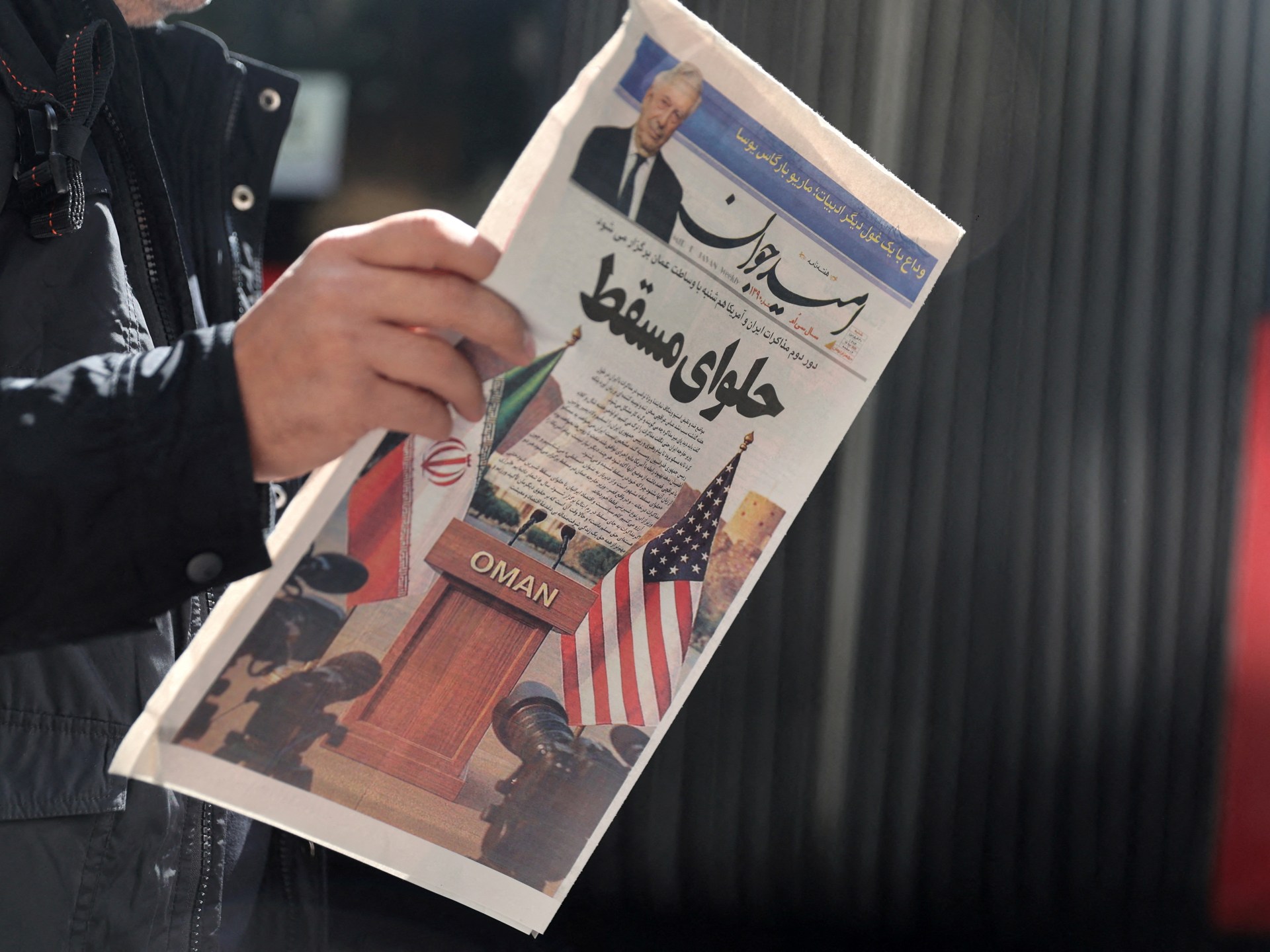
Iran says it will brief China this week in advance of a third round of talks with the United States on its nuclear programme, as Iranian officials separately accused Israel of seeking to “undermine and disrupt the diplomatic process”.
Iranian Foreign Minister Abbas Araghchi will visit Beijing on Tuesday to discuss the latest talks with the administration of US President Donald Trump on the country’s nuclear programme, spokesman Esmaeil Baqaei said on Monday.
The trip echoes “consultations” Iran held with Russia last week, before the second round of direct US-Iran talks was held over the weekend. A third round of talks between Araghchi and US envoy Steve Witkoff is scheduled to take place in Oman on Saturday.
Araghchi has previously said Tehran always closely consults with its allies, Russia and China, over the nuclear issue.
“It is natural that we will consult and brief China over the latest developments in Iran-US indirect talks,” Baqaei said.
Russia and China, both nuclear-armed powers, were signatories to a now-defunct 2015 deal between Iran, the US and several Western countries intended to defuse tensions around Tehran’s nuclear programme.
The 2015 deal, known as the Joint Comprehensive Plan of Action (JCPOA), from which Trump withdrew in 2018, saw Tehran curtail its nuclear programme in exchange for sanctions relief.
The US and Israel have accused Iran of seeking to use the programme to develop nuclear weapons. Tehran has staunchly denied the claim, saying the programme is for civilian purposes.
On Monday, the Chinese Ministry of Foreign Affairs stressed close ties between Beijing and Tehran, but did not confirm the Iranian minister’s planned visit.
“China and Iran have maintained exchanges and contacts at all levels and in various fields. With regard to the specific visit mentioned, I have no information to offer at the moment,” Guo Jiakun, spokesperson for the ministry, said.
Strengthened alliance
Israel’s war in Gaza has seen Iran pull closer to Russia and China. Recent diplomatic moves surrounding the US-Iran talks have further underscored the strengthened ties.
Araghchi met his Russian counterpart, Sergey Lavrov, last week, just before his second round of negotiations with Witkoff.
On Monday, Russian President Vladimir Putin signed off on a 20-year strategic partnership treaty agreed earlier this year with his Iranian counterpart, Masoud Pezeshkian.
Meanwhile, Iran’s already fraught relations with Israel and its “ironclad” ally, the US, have nosedived amid the war. Since taking office, Trump has reinstated a “maximum pressure” sanctions campaign against Tehran, while repeatedly threatening military action if a new nuclear deal is not reached.
Speaking on Monday, Foreign Ministry spokesman Baqaei accused Israel of trying to disrupt the nascent negotiations to open the way for military action.
In comments carried by the AFP news agency, he declared that Israel is behind efforts from a “kind of coalition” to “undermine and disrupt the diplomatic process”.
“Alongside it are a series of warmongering currents in the United States and figures from different factions,” the spokesman said.
Last week, Prime Minister Benjamin Netanyahu reiterated that Israel would not allow Iran to acquire nuclear weapons.
His statement came a day after The New York Times reported that Trump had dissuaded Israel from striking Iran’s nuclear sites in the short term, saying Washington wanted to prioritise diplomatic talks.
‘Consultations must continue’
Baqaei added that “consultations must continue” with countries that were party to the JCPOA.
Iran has gradually breached the terms of the treaty since Trump abandoned it, most notably by enriching uranium to levels higher than those laid out in the deal.
The International Atomic Energy Agency says Iran has enriched uranium to 60 percent, close to the 90 percent level needed to manufacture weapons. The JCPOA had restricted it to 3.67 percent, the level of enrichment needed for civilian power.
Speaking last week, Witkoff sent mixed messages on what level Washington is seeking. He initially said in an interview that Tehran needed to reduce its uranium enrichment to the 3.67 percent limit, but later clarified that the US wants Iran to end its enrichment programme.
Middle East
Israeli report on killing of Palestinian medics in Gaza: What to know | Israel-Palestine conflict News

The Israeli army has described its killing of 15 emergency workers in Gaza and burying them and their vehicles as a “professional error”.
The bodies of 14 humanitarian workers were found in a mass grave along with their crushed vehicles a week after coming under Israeli fire in late March. One body had been found a few days before.
The army said it had “shrouded” the bodies with cloth and sand to protect them until humanitarian organisations could retrieve them.
Israel had blocked access to the site for days, later insisting it was not an attempt to cover up the attack.
Here’s what to know about the attack, Israel’s claims and how the investigation stacks up against other evidence:
What happened to the emergency workers and vehicles in Gaza?
March 23: About 4am (01:00 GMT), a Palestine Red Crescent Society (PRCS) ambulance was dispatched to join an earlier one helping people injured in an Israeli air strike in Rafah’s al-Hashaashin area.
Contact was lost with it, and the first ambulance went back out to find it about 5am. The paramedics radioed back that they could see casualties on the ground on the way to Tal as-Sultan, another area in southern Gaza.
Two more ambulances were dispatched along with a firetruck and other emergency vehicles. They came under Israeli gunfire for more than five minutes. Minutes later, soldiers also fired at a United Nations car that stopped at the scene. The PRCS lost contact with its team.
March 24: The Israeli military blocked access to the site of the attacks.
March 27-28: United Nations and Palestinian officials gain limited access to the area, recovering the vehicles and bodies of a Gaza Civil Defence member.
March 30: The bodies of five Civil Defence responders, a UN employee and eight PRCS workers are found in a shallow grave. A ninth PRCS worker, Assaad al-Nassasra, is being held by Israel, PRCS confirmed later. In total, Israel killed 15 emergency workers in the attack.
What did video evidence show?
A video found on the phone of slain paramedic Rifaat Radwan shows the team’s final moments.
The video, filmed from inside one of the last two ambulances to head out, shows a firetruck and ambulances driving ahead through the night.
All vehicles were clearly identified with emergency lights flashing.
The vehicles stopped when they see an ambulance and bodies by the roadside, and first responders in reflective uniforms exit the vehicles. Moments later, intense gunfire erupts.
As the gunfire continues, Radwan can be heard asking his mother for forgiveness and reciting the Islamic declaration of faith, the Shahada, before he dies.
What did the Israeli investigation say?
After a review, the Israeli military described the killings as “professional failures” and a “misunderstanding”. Nobody has been charged.
It dismissed a deputy commander for “providing an incomplete report” and reprimanded a commanding officer.
Major General Yoav Har-Even, who conducted the review, said two responders were killed in an initial incident, 12 people were killed in a second shooting and another person was killed in a third incident.
“The fire in the first two incidents resulted from an operational misunderstanding by the troops, who believed they faced a tangible threat from enemy forces. The third incident involved a breach of orders during a combat setting,” the military statement said.
Troops bulldozed over the bodies and their mangled vehicles, but the investigation said that was not an attempt to conceal the attack.
The Military Advocate General’s Corps, meant to be an independent body under Israel’s attorney general and Supreme Court, can now decide whether to file civil charges.
How did Israel explain shooting the ambulances?
The investigative report said soldiers did not recognise the ambulances due to “poor night visibility” and because flashing lights are less visible on night-vision drones and goggles.
It also blamed the now-dismissed deputy commander, saying he mistakenly thought the ambulance was being used by Hamas and opened fire first.
Israel has tried to justify previous attacks on protected entities by saying Hamas hides among civilians and uses ambulances to carry out operations.
Har-Even told reporters that one of the humanitarian workers at the scene was questioned over suspected Hamas links. The man, Munther Abed, was released the next day.
Before the video of the attack was found, Israel’s military had said the ambulances had been “advancing suspiciously” towards its soldiers “without headlights or emergency signals”.

How did Israel explain shooting uniformed medics?
The first responders were “in their uniforms, still wearing gloves” when they were killed, said Jonathan Whittall, the head of the UN Office for the Coordination of Humanitarian Affairs (OCHA) in the Palestinian territory.
Gaza Civil Defence spokesperson Mahmoud Bassal said several team members were found with their hands and feet bound and bullet wounds to the head and torso, indicating they were executed at close range after being identified as humanitarian workers.
Without offering proof, the Israeli investigative report said six of those killed were “Hamas members” although no Palestinian fighters were reported found in the mass grave.
Har-Even told reporters that no paramedic was armed and no weapons were found in any vehicle.
An Israeli military official said the bodies had been covered “in sand and cloth” to preserve them until their retrieval could be coordinated with international organisations.
The army also said it has found “no evidence to support claims of execution” and “such claims are blood libels and false accusations against [Israeli] soldiers”.
How thoroughly does Israel investigate itself?
Human rights groups and international legal experts said Israel’s self-reviews often lack independence and transparency.
Israel said it reviews its military’s conduct through internal probes led by its military advocate general, who decides whether to pursue criminal investigations.
But the military has a track record of denying wrongdoing, contradicting itself or blaming low-ranking individuals without broader repercussions for the armed forces.
In 2022, it claimed Al Jazeera journalist Shireen Abu Akleh was killed by Palestinian fire until several media investigations debunked that. Israel later admitted it may have shot her “accidentally” but ruled out a criminal probe.
In January, the International Criminal Court’s top prosecutor defended seeking arrest warrants for Israeli Prime Minister Benjamin Netanyahu and his former Defence Minister Yoav Gallant, citing Israel’s failure to genuinely investigate allegations of war crimes.
How have critics responded?
The PRCS and the Israeli rights organisation Breaking the Silence have rejected the findings of the Israeli probe.
“It is incomprehensible why the occupation soldiers buried the bodies of the paramedics,” PRCS President Younis al-Khatib told Al Araby TV.
He said evidence such as the video proved “the falsehood of the occupation’s narrative”, adding that the Israeli army communicated with the paramedics before killing them.
-
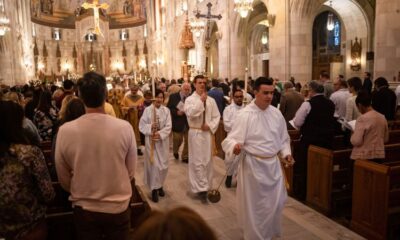
 Europe2 days ago
Europe2 days agoBefore Easter became a holy day for Christians, it was the beginning of the Resistance
-
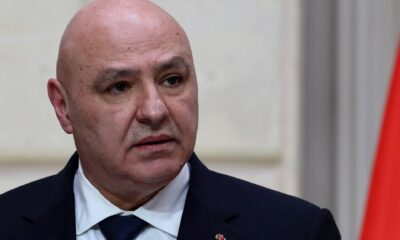
 Middle East2 days ago
Middle East2 days agoLebanese president says disarming Hezbollah ‘delicate’ as Israel kills two | Israel attacks Lebanon News
-

 Lifestyle2 days ago
Lifestyle2 days agoQueen Elizabeth II’s favorite dog breed race for glory in the UK’s Corgi Derby
-
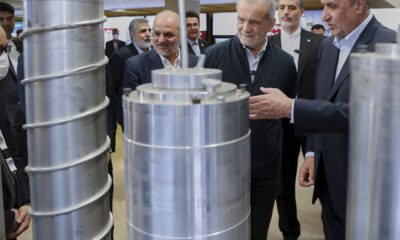
 Africa2 days ago
Africa2 days agoIran, US confirm third round of nuclear talks in coming week
-
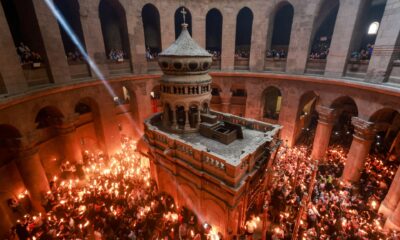
 Middle East2 days ago
Middle East2 days agoThousands gather for centuries-old Holy Fire ceremony in Jerusalem | Jerusalem News
-

 Sports2 days ago
Sports2 days agoNBA Playoffs: Los Angeles Lakers succumb to heavy defeat against Minnesota Timberwolves in Game 1 despite late comeback
-
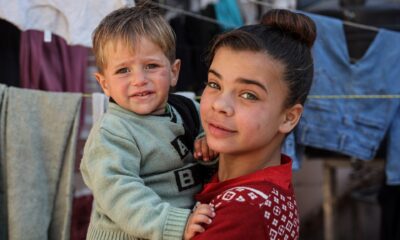
 Middle East2 days ago
Middle East2 days ago‘Little guest’: How a rescued baby brought two Gaza families together | Israel-Palestine conflict
-
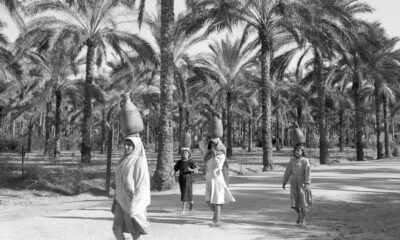
 Middle East2 days ago
Middle East2 days agoThe Hawaii of Israel: How Trump legitimised a longstanding Israeli vision | Israel-Palestine conflict




